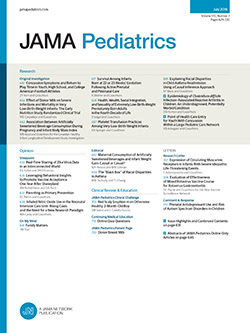青少年自杀干预:系统回顾。
IF 18
1区 医学
Q1 PEDIATRICS
引用次数: 0
摘要
自杀是年轻人死亡的主要原因,也是一场不断升级的公共卫生危机。目的评价现有治疗方法对高自杀风险青少年自杀念头和行为的效果和危害。检索2000年1月1日至2024年9月26日的MEDLINE、Embase、Cochrane Central Register of Controlled Trials、Cochrane Database of systematic Reviews、Scopus等数据库和各种灰色文献源,进行系统评价。我们纳入了随机临床试验、比较观察性研究、心理社会干预、药物干预、神经疗法、新兴疗法和联合疗法的前后对照研究。符合条件的患者是自杀风险较高的青少年(5-24岁),已知自杀风险较高的种族和少数民族青少年,或暴露于犯罪或暴力的青少年。一对对独立的评论者选择和评价研究。本综述包括65项研究(33项随机临床试验,13项比较观察性研究和19项前后对照研究),报告了14 534例患者(中位年龄15.1岁;75.1%女性患者)。心理社会干预包括心理治疗干预(33项研究;认知行为治疗、辩证行为治疗、自杀行为的协作评估和管理、动态解构心理治疗、基于依恋的家庭治疗和以家庭为中心的治疗)、急性(即1-4次治疗或接触)心理社会干预(19项研究;安全规划、基于家庭的危机管理、动机性访谈危机干预、危机后护理的连续性和简短的辅助治疗),以及学校或社区的社会心理干预(13项研究;社会网络干预、基于学校的技能干预、自杀意识或看门人计划,以及基于社区的、适合文化的辅助计划)。辩证行为疗法对减少自杀意念有中等强度的证据。其他类型的社会心理治疗显示出减少自杀结果的证据不足或强度低。没有一项研究评估不良事件。对有自杀危险的青少年进行药物治疗的证据基本上是不存在的。结论和相关性本系统综述发现,针对自杀风险高的青少年的现有干预措施的证据是不确定的。药物、神经疗法和新兴疗法在这一人群中仍未得到研究。有限的证据基础要求开发新颖的,发育和创伤知情的治疗方法,以及针对青少年中不断增加的自杀风险的多层次干预措施。本文章由计算机程序翻译,如有差异,请以英文原文为准。
Suicide Interventions for Youths: A Systematic Review.
Importance
Suicide is a leading cause of death among young people and an escalating public health crisis.
Objective
To assess the effectiveness and harms of available treatments for suicidal thoughts and behaviors among youths at heightened risk for suicide.
Evidence Review
A systematic review was conducted searching databases including MEDLINE, Embase, Cochrane Central Register of Controlled Trials, Cochrane Database of Systematic Reviews, Scopus, and various gray literature sources from January 1, 2000, to September 26, 2024. We included randomized clinical trials, comparative observational studies, and before-after studies of psychosocial interventions, pharmacologic interventions, neurotherapeutics, emerging therapies, and combination therapies. Eligible patients were youths (aged 5-24 years) with heightened risk for suicide, adolescents from racial and ethnic minority groups known to be at increased risk of suicide, or those exposed to crime or violence. Pairs of independent reviewers selected and appraised studies.
Findings
This review included 65 studies (33 randomized clinical trials, 13 comparative observational studies, and 19 before-after studies) reporting on 14 534 patients (median age, 15.1 years; 75.1% female patients). Psychosocial interventions comprised psychotherapy interventions (33 studies; cognitive behavioral therapy, dialectical behavioral therapy, collaborative assessment and management of suicidality, dynamic deconstructive psychotherapy, attachment-based family therapy, and family-focused therapy), acute (ie, 1-4 sessions or contacts) psychosocial interventions (19 studies; safety planning, family-based crisis management, motivational interviewing crisis interventions, continuity of care after crisis, and brief adjunctive treatments), and school- or community-based psychosocial interventions (13 studies; social network interventions, school-based skills interventions, suicide awareness or gatekeeper programs, and community-based, culturally tailored adjunct programs). Dialectical behavior therapy showed moderate strength of evidence for reducing suicidal ideation. Other categories of psychosocial treatments showed insufficient to low strength of evidence for reducing suicidal outcomes. None of the studies evaluated adverse events. The evidence base on pharmacologic treatment for youths at risk of suicide was largely nonexistent.
Conclusions and Relevance
This systematic review found that the current evidence on available interventions targeting youths at heightened risk of suicide is uncertain. Medication, neurotherapeutics, and emerging therapies remain unstudied among this population. The limited evidence base calls for the development of novel, developmentally and trauma-informed treatments, as well as multilevel interventions to target the increasing suicide risk among youths.
求助全文
通过发布文献求助,成功后即可免费获取论文全文。
去求助
来源期刊

JAMA Pediatrics
PEDIATRICS-
CiteScore
31.60
自引率
1.90%
发文量
357
期刊介绍:
JAMA Pediatrics, the oldest continuously published pediatric journal in the US since 1911, is an international peer-reviewed publication and a part of the JAMA Network. Published weekly online and in 12 issues annually, it garners over 8.4 million article views and downloads yearly. All research articles become freely accessible online after 12 months without any author fees, and through the WHO's HINARI program, the online version is accessible to institutions in developing countries.
With a focus on advancing the health of infants, children, and adolescents, JAMA Pediatrics serves as a platform for discussing crucial issues and policies in child and adolescent health care. Leveraging the latest technology, it ensures timely access to information for its readers worldwide.
 求助内容:
求助内容: 应助结果提醒方式:
应助结果提醒方式:


